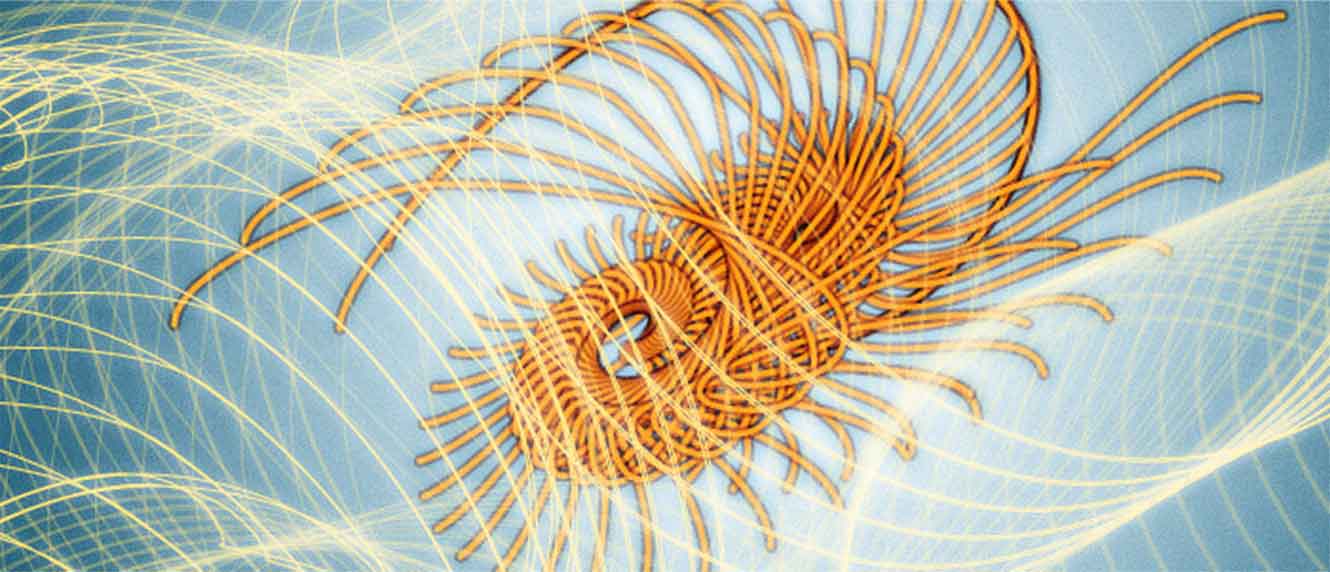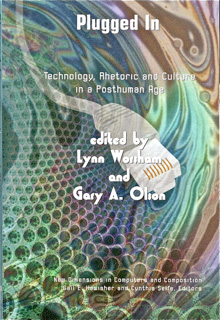Plugged In: Technology, Rhetoric and Culture in a Posthuman Age Edited by Lynn Worsham and Gary A. Olson (2008)
Part 3: Memory and Networked Cultures
The final grouping of authors examines a range of cultural studies practices that are actively reshaping how we conceive of "Network Cultures." Michelle Comstock's "Grrrl Zine Networks: Re-composing Spaces of Authority, Gender, and Culture" looks at the"growing do-it-yourself (DIY) zine network[s]" that remain underexamined in postfeminist authorship surveys. This counter-culture’s media practices include unique genre blending of rants, poetry, and personal stories, among other practices of "critical pastiche" that precludes not only a universal idea of woman as author but also any simple literary categorization (p. 173). The growl overtones of "grrrl" testify, as Comstock suggests, to these authors' need to "make some noise" and call attention to the structures of literacy and white, middle-class heteronormativity that delegitimize their practices (p. 168). Far from an exceptional phenomenon, she contends that the rhetoricality of these sites have much to teach us about pedagogy and cultural production, especially when we consider how "zine writers and Web designers have reterritorialized grrrl identities as sources of political and social authorship and agency […] outside the academy's often paternalistic discourse of student need and ‘banking’ approaches to literacy education" (p. 169). Importantly, Comstock reminds scholars of digital writing to pay particular attention to its marginalized networks.
"We do not know how to renounce anything, Freud once observed. This type of relation to the object indicates an inability to mourn." ~Avital Ronell |
|---|
Maya Socolovsky as well traces an emerging genre of web writing. Her essay, "Cyber-spaces of Grief: Online Memorials and the Columbine High School Shootings," explores digital mourning rituals in order to theorize the differences between physical and electronic monuments. As death must remain our Other, the making-present of a spatialized monument is necessary when the latter must be remembered. Although similar in intention, virtual monuments offer new experiences of time, space, and the practices and structures of memory; "the electronic text is always a simulacrum with no concrete instantiation of itself elsewhere" (p. 188). As the subject in electronic spaces has no absolute fixed frame of spatial reference, Socolovsky argues the virtual space becomes a gravesite where those in mourning can "manipulate the details of the memorial" (p. 189). Socolovsky's case studies include popular electronic memorial sites such as Virtualmemorial.com and a comparative study of electronic memorials in the wake of the Columbine memorials. Relying upon Slavoj Zizek's theories, she argues that Internet memorials remain haunted because they lack the very spatiality of the physical monument that allows for displacement of death as Other.
"Adjusting culture to technology means taking into account the 'dynamic schemes' of present-day technics and casting aside those issuing from a reality that today has disappeared. It means, too, admitting that the technical dynamic precedes the social dynamic and imposes itself thereupon." ~Bernard Stiegler |
|---|
In contrast to monuments that seek to keep the deceased virtually alive, John Johnston's "Network Theory and Life on the Internet" sheds light on how networks, the inorganic dead, rely on open, dynamic systems to create ecological organizations independent of human intention. The cause is the phenomenon known as "small world" network theory that allows for the well-known cliché "six degrees of separation from Kevin Bacon" in relationship to Hollywood film connections. "The Web's link-node structure exhibits a power law" that is dominated by "a number of 'hubs' with a large number of links" (p. 214). By the same token that Bacon has been in so many movies and, with each one, adds another six degrees of connection, it is little coincidence, Johnson observes, that large hubs like Amazon.com will continue to grow. As new sites are added to the Web, they accord to a law of "preferential attachment" wherein "links are chosen to enhance connectivity and visibility"; or, as Johnston facetiously states, "Them that already has, get more" (p. 214). Such laws are evidence that the Web's "self-organizing properties continue to function unperturbed by and completely independent of human intention" (p. 217).

